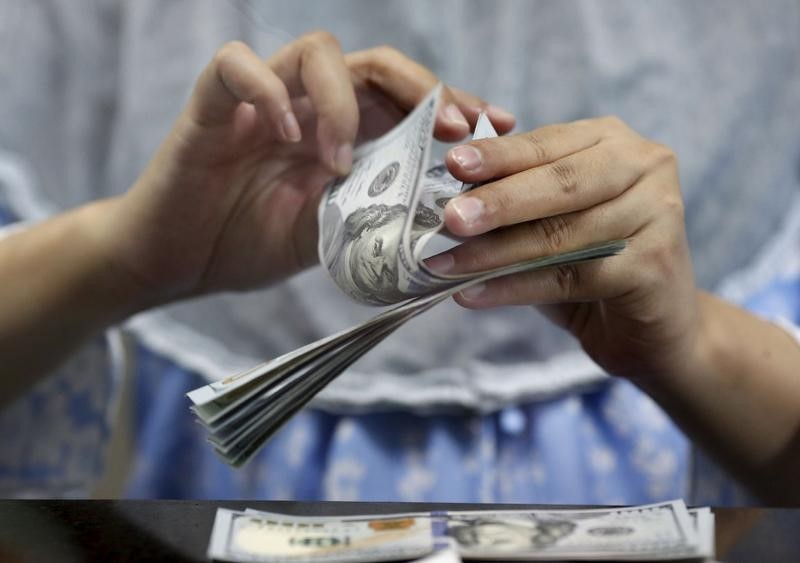By Gina Lee
Investing.com – The dollar was up on Thursday morning in Asia over expectations that U.S. Federal Reserve will tighten its monetary policy more aggressively. However, the greenback was far off the previous day's high as investors await what a gathering of finance ministers might say about the currency’s rapid appreciation.
The U.S. Dollar Index that tracks the greenback against a basket of other currencies edged up 0.15% to 100.565 by 11:24 PM ET (3:24 AM GMT).
The USD/JPY pair was up 0.48% to 128.50.
The AUD/USD pair was down 0.26% to 0.7430 and the NZD/USD pair was down 0.36% to 0.6780. New Zealand’s consumer price index (CPI) grew 6.9% year-on-year and 1.8% quarter-on-quarter in the first quarter of 2022, the fastest pace in 32 years.
The USD/CNY pair was up 0.21% to 6.4327 and the GBP/USD pair edged down 0.15% to 1.3047.
The U.S. dollar hit a two-decade high of 129.430 against the yen on Wednesday, after the Bank of Japan (BOJ) stepped into the bond market for the third time in three months to defend its zero-percent yield target. The central bank offered to buy unlimited amounts of 10-year Japanese government bonds for four consecutive sessions on Wednesday ahead of handing down its policy decision in the following week.
Meanwhile, in the latest comments backing bigger interest rate hikes, San Francisco Fed President Mary Daly said on Wednesday she believed the case for a half-percentage-point rate hike in May 2022 is "complete" and "solid". Investors are now betting on half-point increases in May and June.
"Few central banks will match the Fed this year for policy hikes and balance sheet retrenchment, making for a dramatic policy differential in the dollar's favor," Westpac strategists said in a note.
The dollar index "should remain bid in this environment, with talk of 101-102 likely to increase near term," the note added.
Although BOJ Governor Haruhiko Kuroda insisted that a weak yen is overall good for the economy, he admitted that moves had been "quite sharp" and could hurt Japanese companies' business plans earlier in the week. Finance Minister Shunichi Suzuki will also meet U.S. Treasury Secretary Janet Yellen later in the week on the sidelines of the Group of 20 financial leaders' gathering in Washington D.C.
Japanese policymakers "have not fully utilized their verbal intervention toolkits yet - the next phase would typically involve describing moves as 'speculative' and threatening to 'take decisive action. If we get to that point, the hurdle for the next logical step of physical intervention may be lower than generally perceived,” RBC Capital Markets chief currency strategist Adam Cole said in a research note.
But on whether intervention would work, it "could restore some short-term balance to markets and manage the pace of yen depreciation but longer-term, there is no prospect of the BOJ mopping up all of the yen selling we anticipate from within Japan as the Fed hiking cycle gets properly underway,” the note added.
